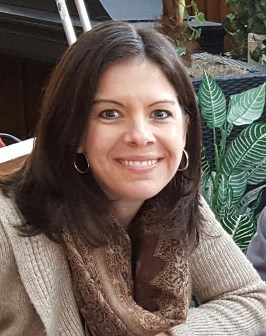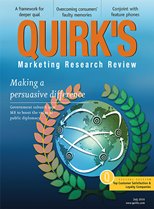Conversations with corporate researchers
Cara Woodland
Global Voice of the Customer Manager, Columbus McKinnon Corporation
 What was your journey to becoming the global voice of the customer manager at Columbus McKinnon Corporation?
What was your journey to becoming the global voice of the customer manager at Columbus McKinnon Corporation?
I spent the first 10 years of my career consulting with Fortune 500 companies to help them better understand their customers’ needs, wants and pain points and put those insights into action by either filling their product pipeline with potential new product concepts or developing more impactful marketing strategies. Following this, I worked on the client side in finance and banking to help business leaders apply marketing and market research insights to positively impact customer engagement, customer experience and internal processes. After a merger in the banking world, I was given the exciting opportunity with Columbus McKinnon to build the company’s global voice of the customer program and partner with the organization as it becomes more customer-centric, invigorates its product line and meets strategic objectives.
Talk about a recent win for the voice of the customer program and what you learned from it.
Columbus McKinnon is a well-established organization and a formal voice of the customer process is a newer concept to us. With any new program, you would expect some resistance to a new process and change. However, from senior leadership to our manufacturing plant workers, there is a recognized need to be more customer-centric and they have all embraced the opportunity to interact and better understand our end user. In addition, the team has been excited to learn how voice of the customer can impact areas beyond the traditional “fuzzy front-end” of product development. This has made a typical uphill climb for my role much easier.
What is the biggest challenge when looking to connect with customers within your industry?
Conducting business-to-business research is typically a more difficult endeavor. However, accessing our end users adds an additional layer of complexity for us. Given that Columbus McKinnon is an industrial manufacturer of hoists, chain and rigging products, our end users tend to be manual labor workers in large companies in industries such as manufacturing, heavy construction, mining, oil, gas and entertainment. Many of these industries, such as automotive, have a very real concern with competitive intelligence leaks, which increases resistance to research. There are also safety concerns when using our product, as it is used to lift and secure heavy objects in extreme conditions, dangerous environments, tight spaces and remote locations. Many companies either do not have the space, are not in accessible locations or are not willing to take the risk of having additional people in their work environment.
In addition, the company has traditionally sold its products through distributors or channel partners and although they are an important voice and part of our value chain, most of our end-user information has come through them rather than through regular contact with our end user. Given this, we do not have a solid end user base to build from and not only have a unique challenge of finding end users but then in getting approval to interview or observe them in action in their work environment.
Could you describe a time you used customer journey mapping to better understand how customers experience a specific product or service?
When I was in banking, we often used customer journey mapping to help us improve our customer experience. After a lengthy segmentation process, one of priorities became improving the online account opening customer experience. Through journey mapping, we were able to outline customer pain points, determine customer requirements and then begin the process to fine-tune our back-office process to streamline the account-opening process. Overall this was a win for our customers but also for our back office, as it saved them time and energy.
How have you leveraged digital ethnography in the past? What were some pros and cons of using this over traditional ethnography?
As I mentioned earlier, we have a challenge in gaining access to our end users’ work environment, with safety concerns, remote locations and concern with competitive intelligence. Digital ethnography provides a way to access this without physically being present. It allows our end users to document their work environment in an acceptable way to their organization and provides us with a level of understanding that we wouldn’t normally be able to receive when interviewing them. It also allows us to see details in spaces we normally wouldn’t be allowed – or fit – in.
